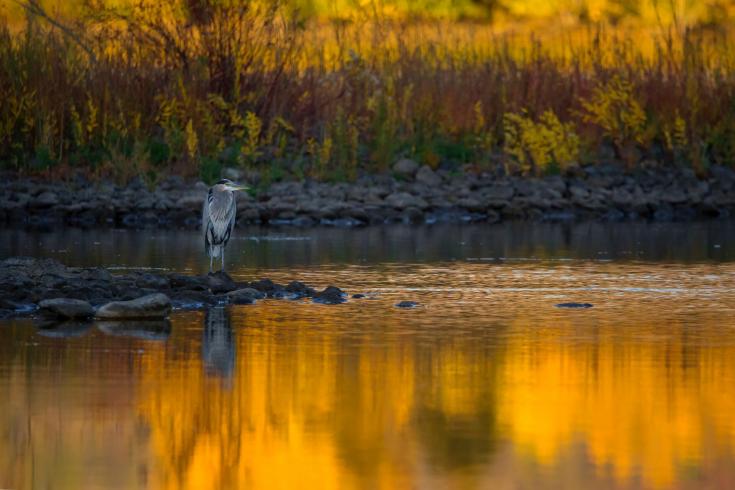From Drained Wetlands to Water Kingdom – the Story of Biosphere Reserve

About two-thirds of the European wetlands that existed 100 years ago have been lost leading to a substantial decrease in their number and size, as well as to changes in the surrounding ecosystem. Nowadays more and more wetlands are being restored, but Europe’s wetlands remain under pressure from land use, urbanization and pollution.
Wetlands are located in marine, coastal and freshwater areas (lakes, rivers, bogs and marshes) and perform a range of functions.They supply drinking and process water, provide fisheries and irrigation, act as a buffer against flooding, receive sewage water, support transport conduits, provide resources such as game, berries, etc. They also have enormous recreational value and are part of the heritage the EU must preserve.
EU legislation linked to nature conservation (Birds and Habitats Directives) highlights the need to save the wetlands. The Ramsar Convention on wetlands is also an important tool for global wetland protection, as well as the Convention on Migratory Species (Bonn Convention) and the Bern Convention, promoting wetland conservation. In addition, most European countries have specific national measures for wetland protection, and many local and regional authorities have made important steps in this regard.
This is the case, for instance, of Water Kingdom, a nature reserve adjacent to the centre of the Swedish city Kristianstad presenting a comprehensive approach to wetlands protection. Within the Interreg Europe project UrbanLinks 2 Landscape, it is an extremely interesting example of how restoring wetlands and prioritising green planning can lead to positive outcomes for nature and people.
How did it all begun?
Kristianstad is a middle-sized city in Sweden with 85 000 inhabitants built upon and surrounded by wetlands. In the 1960s and 1970s, as a result of the economic growth in Sweden and rapid expansion of the city, the wetlands were seen as a problem and hence drained. In the 1980s and 1990s the perception of wetlands changed from an issue to a resource, and the work on restoring the wetlands and creating the 'Water Kingdom' started. Activities also aimed to improve their accessibility and integrate educational elements in the process. As a result of these efforts, 150 hectares of wetlands have been restored. In parallel, several nature reserves were created to protect the birdlife and sensitive ecosystems in the area.
Becoming UNESCO Man and Biosphere reserve
In 2005 Water Kingdom was recognised by UNESCO as a Man and Biosphere reserve. UNESCO biosphere reserves are a network of areas comprising highly valued terrestrial, marine and coastal ecosystems which also promote solutions for reconciling the conservation of biodiversity with its sustainable use. Half of the municipal territory is part of the reserve and the city Kristianstad is situated in the middle of it.
Five years later, a public investment of 10M EUR was dedicated to building a large visitor center in the middle of the wetlands. With more than 950 000 visitors since its opening the visitor centre includes educational elements and gives local citizens and tourists the opportunity to visit, learn and enjoy the area. The investment was paid back as a result of the increased tourism activities in the city. The restoration of the wetlands brought positive outcomes also for biodiversity - both new and old species such as cranes, wild otters, catfish, have found their way back to the area and/or their number has stabilised. The Water Kingdom has become an important part of the municipal profile.
Taking into account the ecosystem services’ role in well-being and economic development is essential for effective decision-making. Such approach also helps to change the attitude towards the environment and improve knowledge and understanding of the interconnections between nature, society and economy. The benefits of investments in nature go beyond the area of biodiversity and represent incentives for local economy, education, tourism and recreation, as exemplified by Water Kingdom.
While evidence for the value of nature has increased significantly, many regions and cities with unique ecosystems face knowledge gap in perceiving the natural capital as an asset that determines development perspectives. Thus, Water Kingdom can serve as an inspiration for other public authorities that are in need of guidance in this process and are looking for new approaches and solutions related to a more effective management of wetlands and valuable urban landscapes.